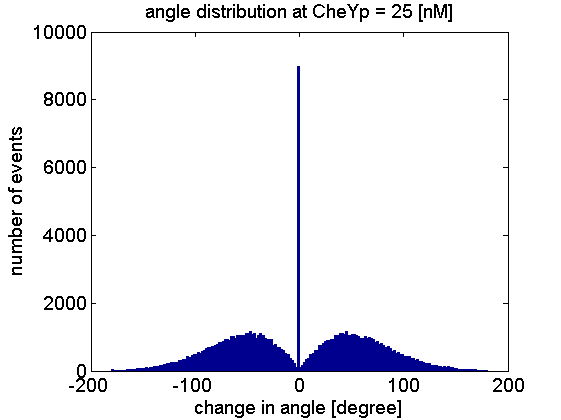Team:ETHZ Basel/Modeling/Movement
From 2010.igem.org
Modeling of the bacterial movement
For simulating the movement of E.coli, we implemented a probabilistic model, meant to reproduce the main statistical features of the existing empirical data. At every time point of the simulation, CheYp concentration is received as an input from the molecular model of the Chemotaxis pathway. From the already - known CheYp - CCW movement dependency (or bias), the probability of CCW movement (running) for the given CheYp concentration and for the given time - point is obtained. The cell then probabilistically chooses whether to run or to tumble. The choice of the running state is equivalent to a change in spatial coordinates, together with a slight change in direction (movement angle), while the choice of the tumbling state corresponds to new movement angle and unchanged spatial coordinates. During tumbling, the tumbling velocity was sampled from a normal distribution, with mean and variance obtained from the literature. [citation]
The dependency CheYp - running probability:
[write bias]
The biggest challenge regarding the movement model was obtaining a time - step - invariant behavior of the cell, whose reliability of statistical estimates should be the same, regardless of how often the cell had to choose its future state. In order to achieve this, we opted for a two - state model, in which the probability of running was controlled separately depending on whether the cell was running or tumbling.
The main assumption of our model was that the mean time in tumbling (mean tumbling length) is constant, while the mean time in running (mean running length) is a function of the bias. This assumption was made in accordance with existent published empirical data analyzing the chemotaxis movement. [citation]
The movement velocity was also considered constant [citation]
We derived the two central parameters of our model - the running probabilities - by exploiting the mathematical dependency between the mean run/tumbling length and the running/tumbling probabilities:
[derivation of the probability formulas]
!PENDING!
Analogous to the highly complex signal transduction in chemotaxis, there is an equally extensive system on side of the flagella, which is even less understood.
Brief descriptions about the statistics of E. coli movement can be found in the literature section and therefore the model will be a stochastical one.
A first implementation was performed by linking the CheYp concentration to the probability of being in the run or tumbling state. These two states either describe the movement and the reorientation as difference equations that can be evaluated at discrete time points. Based on literature statistics about the distribution of change in angle due to tumbling a weibull distribution was selected:
To represent the probability density function it is transformed into a vector that has a frequency of elements that corresponds to the relation of probabilities of the function.
The reorientation happens by selecting a random element of the vector giving the new change in angle. The walks for a thousand steps at different constant CheYp concentrations are shown below:
At a CheYp concentration of 0 the probability for running is about 98%.
At CheYp = 12.5 [nM] both states are equally probable.
At CheYp = 25 [nM] tumbling is dominant.
Here is the check of change of angele at 25 [nM] for 1e5 steps:
 "
"



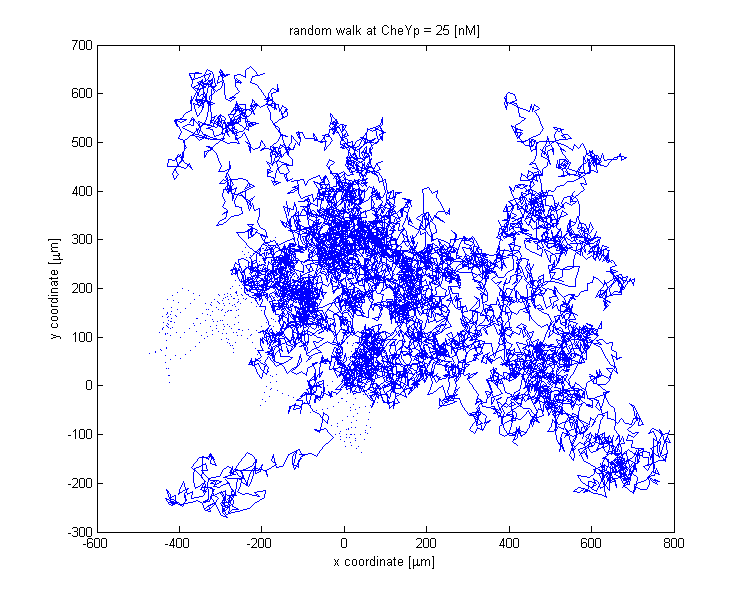

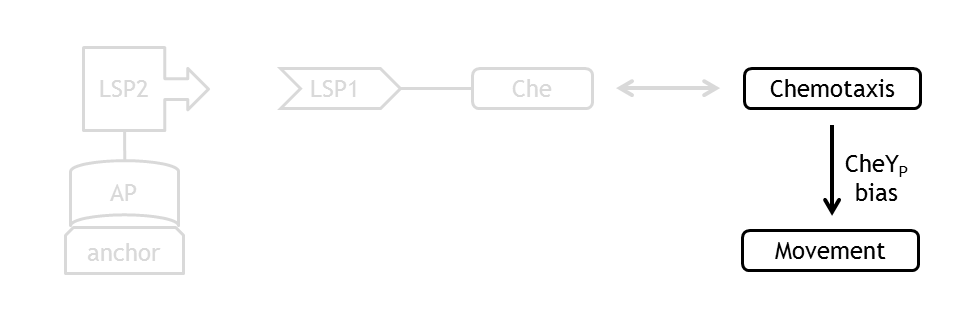
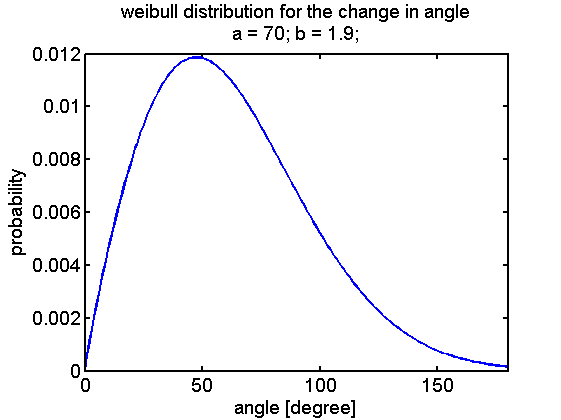
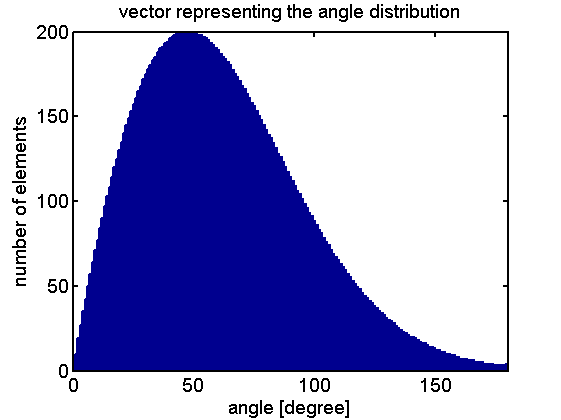
![A random walk at CheYp = 0 [nM].](/wiki/images/f/f7/Walk_CheYp_0.png)
![A random walk at CheYp = 12.5 [nM].](/wiki/images/b/bd/Walk_CheYp_12p5.png)
![A random walk at CheYp = 25 [nM].](/wiki/images/5/5b/Walk_CheYp_25.png)
